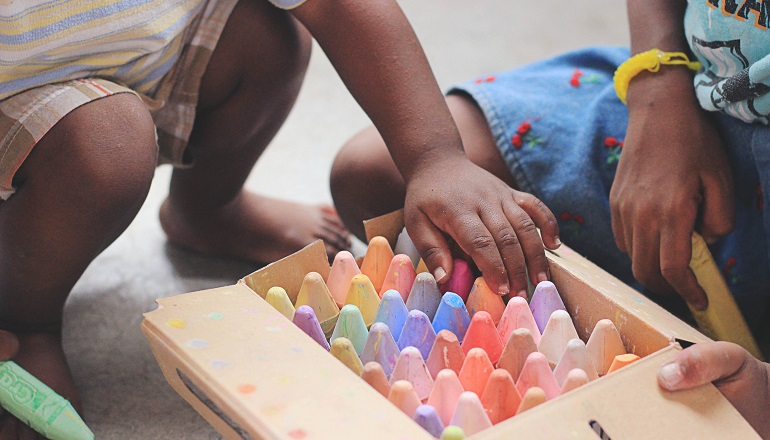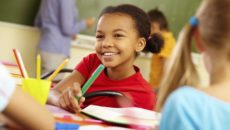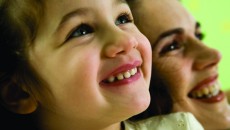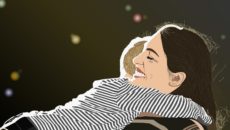As children progress through preschool, they begin to use two new cognitive skills—categorization and generalization. Categorization links things together. Children fall into one category, adults into another; boys are one category, girls another. Their categories may be based on hair color, clothing, skin color, or other features.
Once children learn to categorize, they begin to generalize. If someone is around their size, he must be a child, because children are short. If someone has gray hair, she must be a grandparent, because grandparents have gray hair.
When four-year-old Langston was watching a basketball game with his dad, he asked, “Who is winning the game, Dad? The black guys or the white guys?” One team wore purple jerseys and the other wore red, but Langston saw two groups of players with similar skin color, and thought black players were one team and white players the other.
While parents might flinch at hearing their children categorize like this, it’s what preschoolers are supposed to be doing developmentally. They form categorical ways of looking at people, and parents must help them see things in other ways. Langston’s father pointed out the jersey colors and how the teams worked with each other based on that similarity.
Preschoolers often find public moments to categorize and generalize, “That lady has a big tummy, she’s got a baby in there!” With their parents help, children learn to reconsider categories.
[“How We’re Different, and How We’re The Same”]
Fitting In
Preschoolers find categories they fit into. A child may notice that her skin color is similar to her neighbors, or her hair is the same color as her sisters. They are not looking for how they are different; they are looking for how they are the same. They generally understand that being the same helps you belong.
Point out to your child how you and he are the same: “We both have brown eyes,” “You have freckles, just like Daddy,” or “You run fast, like your brother.” Before a child understands his uniqueness, he needs to understand his sameness to other family members. Sameness will later show differences to be wonderful qualities.
Recent research on preschoolers and racial identity suggests that, even if children are exposed to negative stereotypes, they do not internalize them. Children this age see stereotyping as part of the world around me, not as this is who I am. Parents can help by treating rude comments as concrete pieces of information: Sometimes grownups are wrong. Not everyone from Mexico likes tacos, or Yes, my skin is lighter than your skin, but, look, we both have freckles on our arms!
As children reach school age, they focus on differences. But this is the time to identify and celebrate sameness. Family connections build the foundation children need as they grow.



